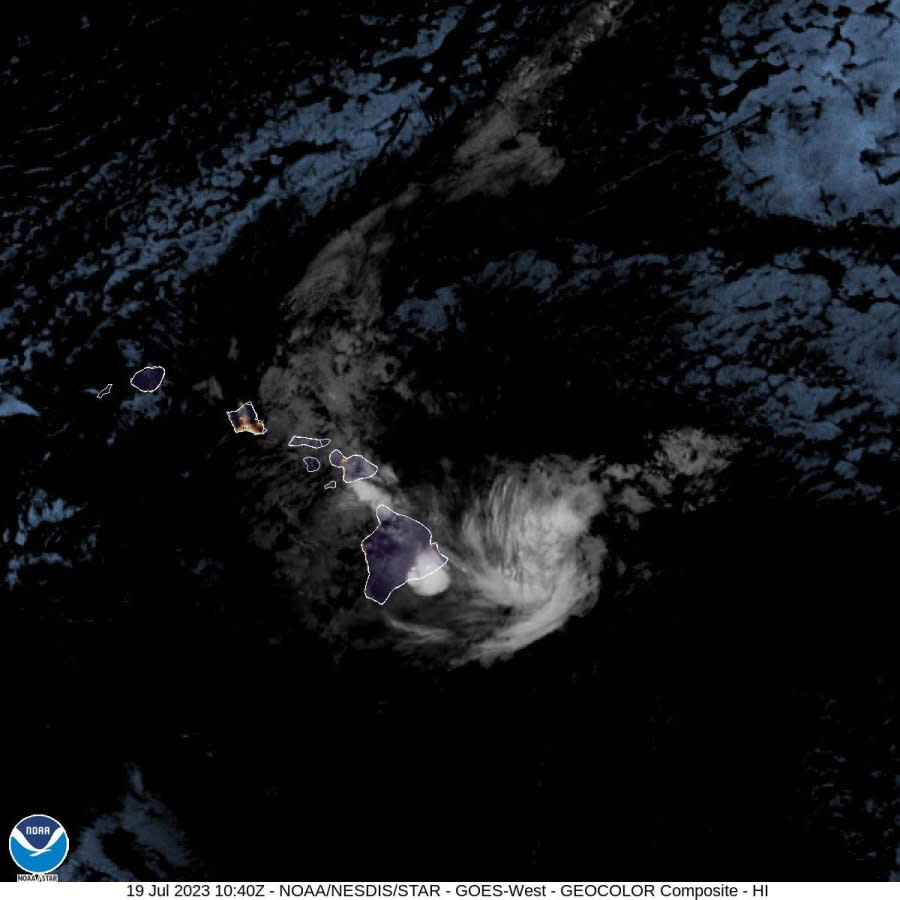Tropical Storm Calvin swipes southern Hawaii with heavy rain

July 13 (UPI) -- The National Hurricane Center said Wednesday that impact from Tropical Storm Calvin was "imminent or occurring" in Hawaii as the storm passed south of Big Island.
In its 11 p.m. HST update, the National Hurricane Center said Calvin carried maximum sustained winds of 50 mph, down 25 mph from when it was at hurricane strength a week earlier before weakening. The storm was located 140 miles south of Hilo and 309 miles southeast of Honolulu.
A tropical storm warning has been issued for Hawaii County on the Big Island and the officials have urged residents to seek cover.
"Calvin is moving toward the west near 20 mph and this motion is expected to continue for the next few days," the National Hurricane Center said. "Tropical-storm-force winds extend outward up to 140 miles from the center.
"Storm total rainfall amounts through Thursday are forecasted to be 4-8 inches, with maximum amounts of 10 inches possible, mainly along the windward slopes and southeast flank of the Big Island of Hawaii. This rainfall could lead to localized flash flooding and mudslides."
Meteorologists warned that the swells from Calvin will likely produce life-threatening surf and rip currents.
Calvin formed as a tropical depression off the southwestern coast of Mexico last Tuesday and gained tropical storm and hurricane strength over the following two days.
In June, the National Weather Service's Climate Prediction Center said that an El Nino event, which occurs when waters on the surface of the ocean heat up, was underway.
"El Nino conditions are present and are expected to gradually strengthen into the Northern Hemisphere winter 2023-24," the Climate Prediction Center said.
According to the NOAA, "June 2023 was Earth's hottest June on record. Ocean surface temperatures hit a record high for a third month in a row as global sea ice shrank to a record low for June."

